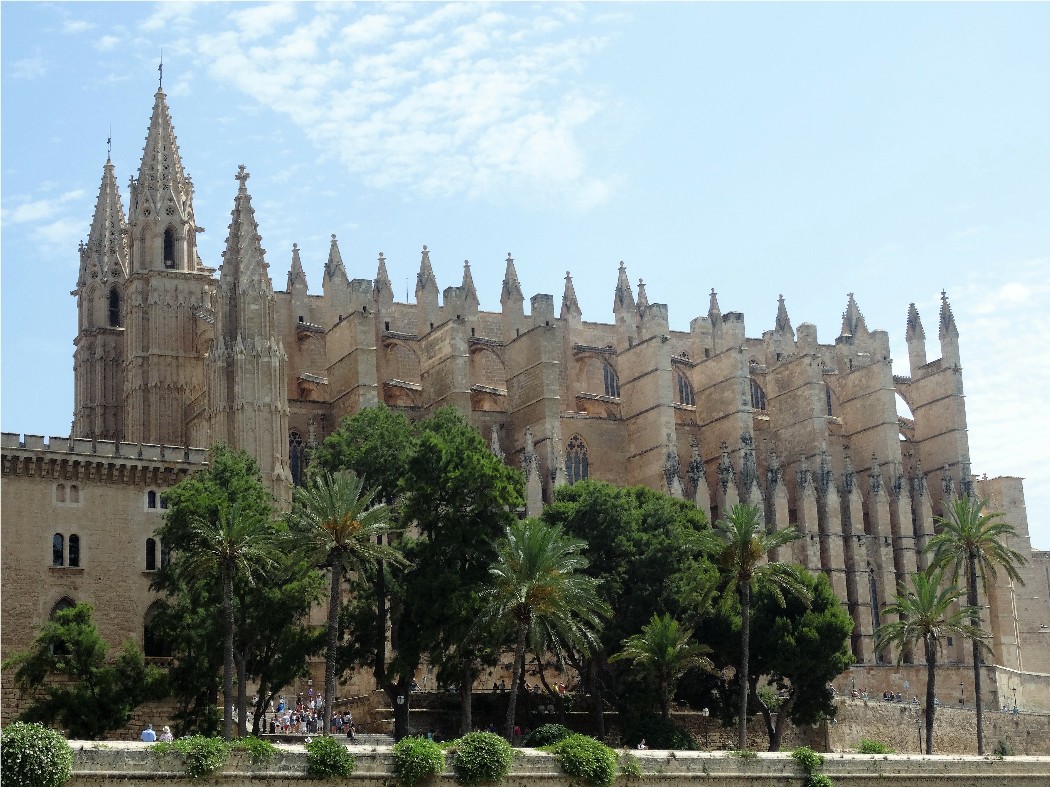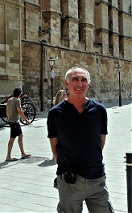


|
|
||||||||||||||||
|
|
||||||||||||||||
|
|
||
|
|
Mallorca Palma Cathedral  Christianity came to the island of Mallorca in the 5th century and it is known that the Bishop of Majorca attended a Synod at Carthage in 484 due to the existence of documentary evidence. During the 9th century a series of battles took place between Christians and Muslims for the control of the island and when the Arabs conquered it in 903 under Emir Isam el Jawlani, they were, as they were through-out their area of domination, tolerant of the Christian religion. Over the next two centuries there were a number of battles with the Christians attempting to regain control of the island, something that they achieved in 1229 under the 21-year-old King James I of Aragon. Following his conquest, King James I embarked on the construction of a cathedral in Palma in order to show that, in the Mediterranean, Islam had been replaced by Christianity. Work on the cathedral started in 1235. It was built on the site of a Moorish mosque which sat within the old city of Palma on top the hill. This was the location of the former citadel of the Roman city, overlooking the Mediterranean Sea and adjacent to the Royal Palace of La Almudaina (See Article above) Work started with the Royal Chapel, so named due to the patronage of the royal house of Majorca, and it was here that the funeral rites of James II (1311) and the coronations of King Sancho (1311), James III (1324) and Peter the Ceremonious (1343) were held. The current apse retains the funeral chapel that was planned as a resting place for the monarchs of the Majorca royal house. In the 15th century Guillem Sagrera took over the construction of the Cathedral and built the Gothic chapter house and the Mirador Portal. In 1490, Guillem’s nephew, Francesc Sagrera, designed the Almoina Portal and in 1498 work on the bell tower to house the 9 bells stopped, although it was not actually completed. Work on the choir started in 1514, and for centuries it occupied the centre of the nave of the basilica. The seats from the choir – currently comprising 110 walnut chairs – can be found by the main altar and in the Royal Chapel. The Cathedral, of Gothic design, is 121 metres long, 55 metres wide and with its nave 44 metres tall it is second in height to Saint-Pierre de Beauvais, the tallest of all Gothic Cathedrals. 14 widely spaced and slender columns divide the nave from the aisles, seven on each side. Light enters the Cathedral through the numerous windows providing a brightly illuminated interior, something that has led to it being known as “the Cathedral of light”. It is also known for the colour of its exterior. The cathedral, being constructed of limestone, changes in colour throughout the day, being a pale beige in the morning and changing to a creamy white at mid-day and then to a rich golden colour towards the evening. The building was officially completed in 1601 with the completion of the construction of the Almudaina or main façade. This portal is dedicated to the Immaculate Conception and is depicted on the tympanum surrounded by fifteen biblical symbols referring to the Blessed Virgin Mary “toda pulchra”. Upon its completion, it was blessed by the Bishop. However, during the 17th and 18th centuries the cloister and the new chapter house were constructed and many of the Baroque altarpieces, paintings and sculptures were installed. Following an earthquake in 1851, which damaged the upper part of the main façade it was restored by Juan B. Peyronet. The interior was not restored until 1904-14 by Antoni Gaudi during his spell at the cathedral. Gaudi also moved the High Altar to the centre of the apse along with the choir stalls, which previously had been in the centre nave thus creating an open unobstructed space in the nave. In the 20th century the choir was moved, this had previously been located between the second and third sections of the nave. Work also included the construction of the baldachin for the main altar after removing the Gothic one. The work also included incorporating the bishop’s seat in the sanctuary and the inclusion of additional windows and artificial lighting. In 2007 the Chapel of the Holy Sacrament was completely refurbished by the Majorcan artist Miquel Barcelo who also created five new stained-glass windows. There is a total of 61 stained-glass windows in the cathedral, with those in the two side naves depicting passages from the Old and New Testaments. It contains five Rose windows with the largest dating back to the 14th century, including the “the Gothic eye”, one of the largest rose windows in the world. Today visitors can also view a number of chapels dedicated to the saints located around the sides of the building and containing some beautiful altarpieces and statues. |
|
|
|
||
All Photographs were taken by and are copyright of Ron Gatepain
| Site Map |
